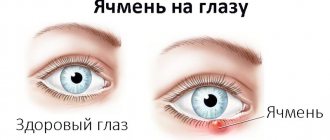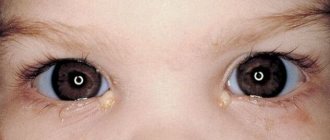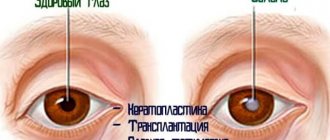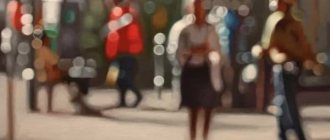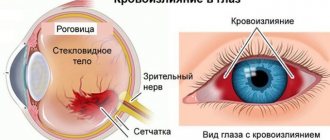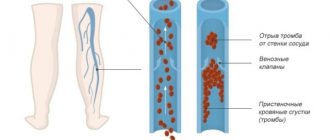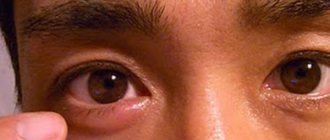What is barley
The inflamed area of the eyelid (upper or lower) is called stye. Pathology received this definition due to the appearance of the lesion, which has a swelling in the form of a yellow grain.
Signs of stye are also: redness of the edge of the eyelid in the area of inflammation, profuse lacrimation, a feeling of cutting, burning, and the presence of sand. As the lump grows, the skin color begins to turn yellow. This is evidence that pus is brewing in the lesion.
Causes
It often happens that for the development of barley, the penetration of fungi (streptococci, staphylococci, etc.) into the body is sufficient. Other reasons can also trigger the problem:
- weakened immunity;
- furunculosis;
- metabolic disease;
- lack of vitamins in the body;
- violation of personal hygiene rules;
- diseases of parasitic etiology;
- pathologies of the digestive system;
- anemia;
- unfavorable environment;
- use of low quality cosmetics.
Causes and forms of the disease
The reason for the formation of barley is the entry of pathogenic microorganisms into the sebaceous gland or hair follicle. The most common causative agent of the disease is Staphylococcus aureus. Predisposing factors are: lack of personal hygiene, hypothermia, diabetes mellitus, obesity, atherosclerosis, hyperlipidemia (increased amount of lipids in the blood serum), a general decrease in the body's defenses. Often the disease occurs as one of the complications of chronic blepharitis (slow inflammation of the eyelids). In children, the cause of the frequent appearance of barley is often a helminthic infestation.
Depending on the location of the purulent process, two forms of barley are distinguished;
- Interior. Occurs when the meiboic gland of the eyelid becomes inflamed;
- External. It is observed when the hair follicle of the ciliary edge is damaged.
Can stye be prevented?
Like a number of other diseases, stye is preventable. Of course, it is impossible to foresee all situations. But it is quite possible to analyze most of the reasons and take predisposing factors into account.
The main recommendation concerns the rules of personal hygiene. It is their violation that often leads to eye infection. It is enough to rub your face with a dirty hand for the development of pathogenic microflora. You should not use other people's cosmetics. Pathogenic bacteria are well preserved in particles of shadows or mascara.
The main etiology of the disease is associated with bacterial activity (95% of patients are infected with barley as a result of poor hygiene).
Experts have identified a risk group that is most often susceptible to the disease. It includes:
- diabetics;
- people with oily skin;
- immunocompromised patients;
- users of decorative cosmetics and contact optics.
You can also prevent stye by protecting your eyes from external factors (wind, draft, frost, cold water procedures, etc.).
Before the appearance
Measures are carried out on a regular basis or once when there is a risk of barley infection. For example, it is not at all difficult to observe the rules of personal hygiene and take care of the brushes with which cosmetics are applied.
It is also important to pay attention to handkerchiefs: it is recommended to use disposable ones. If preference is given to fabric products, they should be ironed more often to destroy pathogenic bacteria.
Important! When choosing this or that cosmetics, you must first find out its expiration date and the list of components.
One of the common provocateurs of barley is cold. When the weather changes, you need to insulate yourself in a timely manner to prevent hypothermia. To prevent a weakening of the immune system, you should take vitamin complexes, exercise, exercise, and maintain a healthy lifestyle.
One of the preventive measures is to avoid using common items.
There is often a need to use someone else's optics. Doing this is strictly prohibited. This is a direct route of infection not only with barley, but also with other ophthalmological diseases.
At the first sign
When symptoms are detected, measures are taken to suppress the inflammation process. It is advisable to do this at the stage of redness. You can remove it using pharmaceuticals and traditional medicine recipes. It is impossible to delay treatment; a purulent ball begins to form on the 2-4th day of the disease.
The essence of treating early manifestations of barley comes down to cauterization. Medical alcohol is used for these purposes. A cotton swab soaked in ethanol is applied to the lesion and held for 10-20 seconds. The treatment is repeated at least 1 time per hour. When performing the procedure, it is important to avoid contact of the instrument with the mucous membrane of the eye.
Reference! You can cauterize barley that is just beginning to develop with a hot chicken egg. It is wrapped in a clean handkerchief and applied to the hearth.
During the period of preventive measures, you should stop using cosmetics. Before treating the eye, it must be washed off. It is also recommended to take care of strengthening the immune system. A good vitamin complex will help strengthen the body's protective functions.
How to prevent stye at home
For preventive purposes, it is recommended to use medications or traditional medicine recipes. They are used individually or in combination.
Table 1. Methods for preventing barley.
| What means to prevent | How to use |
| Drops | Suitable products have anti-inflammatory and antibacterial effects. They carry out treatments up to 4 times a day. Among the popular ones: Albucid, Hydrocortisone, Levomycetin, Prednisolone. |
| Solutions | You can wipe the inflamed area of the eyelid with solutions: medical alcohol, iodine, brilliant green, calendula tincture. Treatments are carried out 4-6 times a day. At the initial stage of the disease, medications help slow down the development of inflammation. |
| Ointments | To suppress the progressive process, it is recommended to use ointments: yellow mercury, tetracycline, hydrocortisone, chloramphenicol, etc. |
| Folk remedies | The most primitive way to prevent the disease is to wash your eyes with tea. Natural raw materials without taste impurities and aromas are used. Other effective methods include:
|
Treatment at the first stage of disease development
Treatment on the first day of the disease almost always gives a positive result.
Before starting therapy, consult your doctor. Independent selection of drugs and procedures can lead to aggravation of the situation.
If the stye is external, then it is treated with antiseptic solutions that relieve redness. Suitable:
- alcohol;
- brilliant green;
- iodine.
Internal stye cannot be treated with these products, as it can burn the cornea. Suitable for this type of disease:
- chamomile infusion;
- infusion of calendula;
- Black tea;
- potassium permanganate.
Dry heat is also suitable for home treatment. However, it can only be used if there is redness. If pus appears, then it is strictly forbidden to heat the barley. Warming up can speed up the process of accumulation of purulent contents. Its entry into the blood will cause an inflammatory reaction throughout the body.
The following is used as dry heat:
- boiled egg;
- warmed porridge;
- boiled potatoes.
Antibacterial drops are used during therapy. They eliminate harmful microorganisms, preventing the infection from spreading throughout the eyelid. Recommended medications:
- "Tobrex";
- "Floxal";
- "Albucid".
Along with the drops, ointments containing an antibiotic are additionally used. They are suitable for internal and external barley. The ointment is either applied to the area of redness or placed behind the eyelid. Often used:
- "Tetracycline";
- "Erythromycin".
Prevention of stye in children
The main reason for the appearance of barley in children is weak immunity. Due to a decrease in the body's protective functions, cases of acute respiratory viral infections, worms and other infections are more often detected. Susceptibility to diseases is caused by dirty hands.
While playing in the sandbox, children uncontrollably touch their mouth, eyes, and nose. It is enough to rub your eyes with such hands for barley to form.
In infants, barley appears against the background of respiratory diseases and teething. Also, inflammation on the eyelid may indicate worms or diabetes.
For prevention purposes, you need to explain to your child that you should not rub your eyes with dirty hands. It is also important to change children's bedding in a timely manner. The pillow needs to be dry cleaned periodically (at home this can be done using a steam unit).
To prevent barley, it is necessary to give the child vitamin complexes and introduce more fresh fruits and vegetables into the menu. To strengthen the immune system, it is recommended to spend more time outside playing active games. Country trips have a beneficial effect on health. Physical activity (within reason) is also encouraged. This could be any kind of sport, cycling, ball games, etc.
Reference! One of the preventive measures against barley is to reduce the child’s time at the computer.
Ways to prevent
One of the main ways to prevent styes is to identify the reasons why they may occur and take effective measures to avoid these unfavorable factors.
The most common reason that barley appears is an infection brought in by dirty hands. Most often these are pathogenic microbes: streptococcus, Staphylococcus aureus. Therefore, it is important to observe basic rules of personal hygiene:
- Wash your hands often with soap.
- Do not touch your face, eyes, mouth, or nasopharynx with unwashed hands.
- Do not use someone else's towel or bed linen.
- Don't wear someone else's clothes.
- Representatives of the fairer sex should use personal cosmetics of proper quality, do not use someone else's mascara, lipstick, etc., and be sure to wash off makeup at night.
- Young children should cut their nails more often and shorter.
- For those who use lenses, strictly follow the rules of wearing and care, store in a special container, and rinse with a solution.
Preventing the appearance of stye is also about maintaining so-called eye hygiene. In the morning and evening, you need to wipe your eyes well from the outer edge to the inner corner with a sterile napkin or bandage.
During the day it is useful to use the ophthalmic remedy “Natural Tear”.
Immunity
Reduced immunity can not only cause a situation where stye begins on the eye, but also cause its relapse. A weakened body is unable to completely overcome the infection, so after some time it appears again.
How to prevent the appearance of stye due to reduced immunity? A number of measures are needed:
- Drug treatment. The patient is prescribed vitamins, immunostimulating and immunomodulating drugs.
- Sport. Swimming, running, walking: walking or cycling, fitness classes, including one of its areas - aerobics, are very useful. However, do not allow physical fatigue or excessive stress. Alternate sports and recreation.
- Healthy lifestyle. Follow a daily routine. Toughen up. Alcohol, tobacco, and drugs have an extremely negative effect on the immune system. Discard them.
- Psycho-emotional state. Stress, nervous tension, and poor sleep increase the likelihood that stye will appear. Try to think positively and avoid situations that lead to worsening mood. Find yourself an activity (hobby) that brings you pleasure.
By strengthening your immune system, you can significantly increase your chances of preventing stye.
Nutrition
Poor nutrition and addiction to various diets can significantly reduce the body's defenses, making it defenseless against infection. How to prevent weakened immunity? The menu must include foods rich in vitamins A, C, B, minerals and trace elements. Should be included in the diet:
- Lean meats.
- Dairy products.
- Greens, vegetables and fruits.
- Seafood.
It is useful to drink: freshly squeezed juices of fruits and vegetables, green tea, rosehip infusion, filtered water. At least 1.5 liters of liquid should be drunk per day.
It is advisable to exclude:
- I'm eating from a fast food chain.
- Carbonated drinks.
- Fatty, salty, smoked, sweet foods.
You need to eat small portions, at least 5 times a day.
Various diseases
Pathological activity and proliferation of microorganisms can be observed in the presence of various diseases:
- Gastrointestinal tract organs. Colitis, gastritis, other dysfunctions and disturbances in the functioning of the digestive organs lead to a significant decrease in the absorption of essential vitamins and microelements in the intestines, and deterioration in tissue nutrition, including the eyelids.
- Endocrine system. Diabetes mellitus changes processes in the body such as its metabolism and damages vascular walls. This may be complicated by pathology in the functioning of the adrenal glands and thyroid gland.
- Infectious nature, including diseases of the eyelids. Tonsillitis, caries, adenoiditis, demodicosis, blepharitis, conjunctivitis.
- Others: vitamin deficiency, hypervitaminosis, hypovitaminosis, furunculosis, anemia, helminthic infestation.
How to prevent the appearance of stye on the eye in this case? It is necessary to contact a specialist who treats a specific existing disease. He will prescribe the necessary course of therapy.
Try not to trigger chronic forms of a particular disease. This will significantly reduce the likelihood of stye appearing on the eye.
Hypothermia
Hypothermia, which occurs with prolonged exposure to low temperatures on the body, sharply inhibits its protective functions. This allows pathogenic microorganisms to freely penetrate the body, which means barley may appear. What to do to prevent this from happening? The only way is not to stay in the cold for a long time. Those who are forced to go out into the cold for a long period need to dress warmly, not forgetting a hat and gloves.
What to do if prevention does not help and barley is still ripe
Some people believe that it is not necessary to treat stye. In a few days, the outbreak will mature and open on its own. Indeed, the duration of the disease is 5-6 days. Sometimes it proceeds without complications. But the risk of complications is so great that treatment should not be neglected. Moreover, it is available to everyone.
If it was not possible to suppress the inflammatory process at the initial stage, you need to continue to use ointments or drops for barley. Prescriptions are obtained from an ophthalmologist. Treatment with antiseptic agents or antibiotics not only speeds up the healing process, but also eliminates relapses.
Cauterization and heating are not advisable at this stage. Drug treatment is being carried out. Traditional methods are suitable as adjuvant therapy. They cannot replace medications.
Treatment
At the initial stage of barley, you can limit yourself to using traditional methods. If the abscess grows, you should resort to drug therapy. Without treatment, the lesion may spread throughout the entire eye. Against the background of complications, there is a danger to visual function.
With the development of phlegmon, the risk of infection entering the human brain increases. Such pathologies do not exclude death. To be fair, it is worth considering that these complications are considered rare, but it is easier to prevent the problem than to deal with the consequences.
Taking into account the fact that barley is often bacterial in origin, antibiotics that are active against staphylococci and other pathogens are prescribed for treatment. The list of appointments includes:
- Gentamicin ointment (Tetracycline, Erythromycin);
- Eye drops Sofradex, Ciprofloxacin.
If barley does not respond well to treatment, the patient is referred for bacterial culture to determine the causative agent.
Symptoms
To prevent the disease, you should know how it progresses. Depending on the characteristics, barley is divided into four stages of development:
- The first signs of inflammation appear. The eye itches and swelling forms. The person may feel weak and feverish. There are cases when, even at the initial stage, the swelling becomes so large that it is extremely difficult to open the eyelid.
- The symptoms are pronounced. The eyelid swells even more. Pain and discomfort appear. A bulge with white contents forms on the eye.
- The rod matures and reaches large volumes, after which it breaks through. Pus leaks out. Sometimes the capsule cannot open on its own, which requires surgical intervention.
- After the pus has drained, a crust appears on the wound, which indicates a speedy recovery.
During all four stages, under no circumstances should the abscess be squeezed out. This may lead to the spread of infection.
If it breaks out on its own, then the wound needs to be treated with an antiseptic solution, and then contact an ophthalmologist. The fight should begin immediately at the first signs of formation.
How to prevent stye?
Read on the topic: Review of the most effective antibacterial drops for barley
What not to do
To quickly eliminate the problem, craftsmen come up with all sorts of things. However, such haste leads to serious complications. To avoid them, it is recommended to observe the following prohibitions:
- do not squeeze out the barley;
- Use cauterization only at the stage of redness of the eyelid, when a purulent grain is formed; heating only accelerates the development of the disease;
- During treatment, you should stop using cosmetics;
- Do not rub your eyes so as not to spread the infection.
If over the course of 5-6 days the condition of the eye tissues worsens, the abscess does not open on its own, and the body temperature exceeds 37 degrees, you should consult a doctor to receive adequate treatment. Delaying time threatens with complications such as sepsis, phlegmon and other dangerous diseases.
Doctors about the causes and methods of treating barley:
Symptoms of the disease
In patients with styes on the eye, limited swelling may be noticed in the area of the edge of the eyelid, above or below. On palpation, such a formation has a dense elastic consistency. The patient may complain of severe aching pain. The skin over the stye is inflamed and swollen. Redness and swelling of the tissues can also be detected when examining the conjunctiva.
Everything about the disease keratoconus treatment, diagnosis, causes, prevention.
One of the most common diagnostic methods is skiascopy, described in detail on this page.
In severe cases of the disease, patients' body temperature rises, regional lymph nodes become enlarged, headaches and other symptoms of intoxication appear. In most cases, within 2-4 days from the appearance of swelling, an area of suppuration appears on the surface of the formation.
The stye can open on its own, releasing pus and small particles of necrotic tissue onto the surface of the eyelid. Usually the breakthrough occurs in the area of the outer corner of the eye. Sometimes it may happen that the center of suppuration does not appear and the formation resolves on its own within a few days.
However, in any case, the appearance of barley should be a reason to consult a doctor. A visit to an ophthalmologist can give you a guarantee of the absence of complications of this disease and proper treatment.
You should pay special attention to your health if you have had stye several times recently or if several of these inflammatory elements have appeared at once.
A detailed clinical examination in this case is necessary to identify the reasons for such a pronounced decrease in immunity. In addition, immediate medical attention is required if the appearance of stye is accompanied by blurred vision or the swelling continues to increase in size.
It is important to distinguish between such pathological conditions as barley and meibomitis or internal barley. Inflammation caused by blockage of the meibomian glands is less acute. Usually such an abscess opens towards the conjunctival sac. Often after this disease, a chalazion develops, characterized by the presence of chronic inflammation of the cartilage tissue of the eyelid around the meibomian gland.
